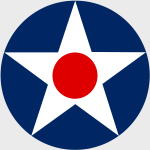Hobby Master HA7903 USN Boeing F4B-4 Pursuit Aircraft - VB-2, Section Five Leader, USS Lexington (CV-2), 1930s (1:48 Scale)
"Why should we have a navy at all? There are no enemies for it to fight except apparently the Army Air Force."
- General Carl Spaatz, Commander of the US 8th Army Air Force, after WWII
 The Boeing P-12 or F4B was an American pursuit aircraft that was operated by the United States Army Air Corps and United States Navy.
The Boeing P-12 or F4B was an American pursuit aircraft that was operated by the United States Army Air Corps and United States Navy.
Boeing developed the aircraft as a private venture to replace the Boeing F3B and Boeing F2B with the United States Navy, the first flight of the P-12 took place on June 25, 1928. The new aircraft was smaller, lighter and more agile than the ones it replaced but still used the Wasp engine of the F3B. This resulted in a higher top speed and overall better performance. As result of Navy evaluation 27 were ordered as the F4B-1, later evaluation by the United States Army Air Corps resulted in orders with the designation P-12. Boeing supplied the USAAC with 366 P-12's between 1929 and 1932. Production of all variants totalled 586.
P-12s were flown by the 17th Pursuit Group (34th, 73rd, and 95th Pursuit Squadrons) at March Field, California, and the 20th Pursuit Group (55th, 77th and 79th Pursuit Squadrons) at Barksdale Field, Louisiana. Older P-12s were used by groups overseas: the 4th Composite Group (3rd Pursuit Squadron) in the Philippines, the 16th Pursuit Group (24th, 29th , 74th, and 79th Pursuit Squadrons) in the Canal Zone, and the 18th Pursuit Group (6th and 19th Pursuit Squadrons) in Hawaii.
The P-12 remained in service with first-line pursuit groups until replaced by Boeing P-26s in 1934-35. Survivors were relegated to training duties until 1941, when most were grounded and assigned to mechanics's schools.
Pictured here is a 1:48 scale replica of a USN Boeing F4B-4 pursuit aircraft that was attached to VB-2, Section Five Leader, then embarked upon the USS Lexington (CV-2) during the 1930s.
Sold Out!
Dimensions:
Wingspan: 8-inches
Length: 5-3/4-inches
Release Date: June 2011
Historical Account "The Gray Lady" - Several ships in the US Navy have born the name Lexington. The fourth such ship, USS Lexington (CV-2), nicknamed the "Gray Lady" or "Lady Lex", was the second aircraft carrier to serve in the United States Navy.
She was originally designated CC-1 and laid down as a battle cruiser 8 January 1921 by Fore River Shipbuilding Company, Quincy, Massachusetts, authorized to be completed as an aircraft carrier on July 1st, 1922, launched October 3rd, 1925, sponsored by Mrs. Theodore Douglas Robinson (wife of the Assistant Secretary of the Navy), and commissioned December 14th, 1927, Captain Albert W. Marshall in command.
On May 7th, 1942, search planes reported contact with a Japanese carrier task force, and Lexington's air group flew an eminently successful mission against it, sinking light carrier Shoho. Later that day, 12 bombers and 15 torpedo planes from still unlocated heavy carriers Shokaku and Zuikaku were intercepted by fighter groups from Lexington and Yorktown, who shot down nine enemy aircraft.
On the morning of the 8th, a Lexington plane located the Shokaku group; a strike was immediately launched from the American carriers, and the Japanese carrier was heavily damaged.
The enemy penetrated to the American carriers at 11:00, and 20 minutes later Lexington was struck by a torpedo to port. Seconds later, a second torpedo hit to port directly abreast the bridge. At the same time, she took three bomb hits from enemy dive bombers, producing a 7 degree list to port and several raging fires. By 13:00 her skilled damage control parties had brought the fires under control and returned the ship to even keel; making 25 knots, she was ready to recover her air group. Then suddenly Lexington was shaken by a tremendous explosion, caused by the ignition of gasoline vapors below, and again fire raged out of control. At 15:58 Captain Frederick Carl Sherman, fearing for the safety of men working below, secured salvage operations, and ordered all hands to the flight deck. At 17:01, he ordered, "abandon ship," and the orderly disembarkation began. Men going over the side into the warm water were almost immediately picked up by nearby cruisers and destroyers. Admiral Aubrey Wray Fitch and his staff transferred to cruiser Minneapolis; Captain Sherman and his executive officer, Commander Morton T. Seligman ensured all their men were safe, then were the last to leave.
Lexington blazed on, flames shooting hundreds of feet into the air. Destroyer Phelps closed to within 1500 yards of the ship then fired two torpedoes into her hull; with one last heavy explosion, Lexington sank at 19:56.





 Boeing F4B pursuit aircraft
Boeing F4B pursuit aircraft 








